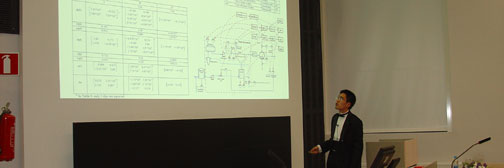| | Year 2017
Susanna MikkolaOptimization scenarios for Waste-to-Energy systems
In this thesis, a model was developed for a single period optimization of a municipal solid waste management (MSWM) supply chain. The model covers waste collection at cities, separation at dumps and processing for reuse at facilities as well as the delivery of the end products to consumers. In addition to waste to energy (WTE) considerations the model can be applied for a wide range of other waste reuse forms.
A starting point for the present work was a published extensive MSWM study and model considering conditions in a developing country. The structure of the present model was modified for conditions relevant to Nordic countries. The model allows controlling the supply chain through capacity ranges for processing facilities and demand upper and lower limits for the end products. The method introduced for implementing the capacity ranges allowed modeling of a capacity threshold. This can be applied more generally for the optimization of the number of facilities in the supply chain.
The mass balance equations in the model describe the waste flow from collection through separation and processing into products and the flow of products to the consumers. The constraints consider the relative amount of reusable waste, the processing capacity ranges and the demand limits. As a result, the model produces an optimal distribution for the waste dis-posal and reuse for the different products as well as distribution of the products to markets. The objective of the optimization is to maximize the profit when considering all the costs in the different phases of the supply chain and the revenue from the product sales. The model was built in the General Algebraic Modeling System (GAMS) program, which applies Mixed Integer Linear Programming (MILP).
The profit maximization alone will not result in maximized waste reuse with the literature based cost structure applied in the model. For a majority of the waste types reuse is non-profitable and controlled by the demand lower limit. Waste reuse can be increased with additional constraints such as setting a minimum limit for reuse. Alternatively, multi-objective optimization could be used with additional suitable target functions. The processing capacity ranges facilitated studying the optimality of the supply chain effectiveness. The MSWM supply chain optimization can consider several consecutive periods. In this case, the model should additionally include intermediate storages with their inventory updating between the periods.
Thesis electronical version can be downloaded from here
This info last modified 27 Apr 2024 by Jukka Kortela
|

